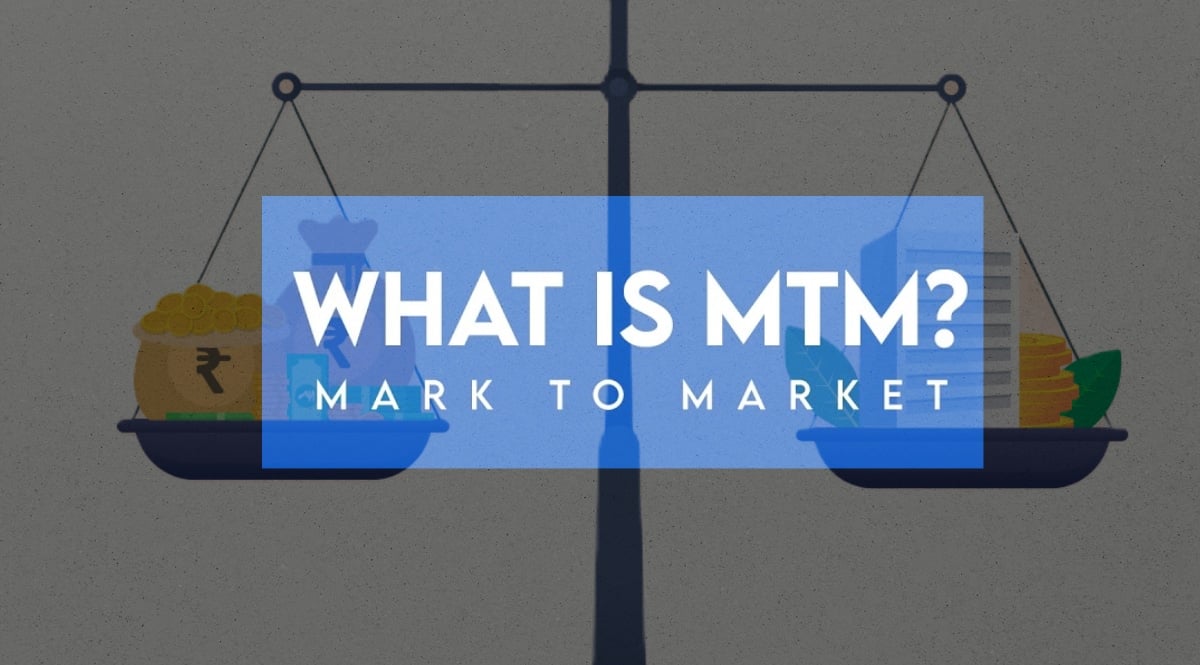Mark to Market – What is MTM?
Mark to market is a set of rules created by FASB, the Financial Accounting Standards Board that governs how corporations and nonprofit organizations in the United States should report their finances.
FASB’s Statement of Interest “SFAS 157–Fair Value Measurements” outlines the definition of “fair value” and provides guidelines on how to determine it according to generally accepted accounting principles (GAAP). According to these rules, assets should be valued at the asset’s true value for accounting purposes and regularly updated.
In trading and investing, certain securities, such as mutual funds and futures contracts, are also marked to market to point out at the current market value of these investments.
Mark to market is an alternative to historical cost accounting. Which maintains an asset’s value at the original purchase cost.
Difficulties can arise when the market based measurement does not accurately represent the true value of the underlying assets. This can happen when a company is forced to determine the selling price of its assets or liabilities during unfavorable or volatile periods, such as during a financial crisis.
In 2009, the Financial Accounting Standards Board approved new guidelines allowing for the evaluation to be based on a prices that would be featured in an orderly market rather than a forced liquidation.
Mark to Market in Accounting
Mark to market in accounting likely refers to the process of valuing liabilities or assets at their current market value rather than their historical cost. This accounting method is also known as “mark-to-market” or “fair value accounting.”
In traditional accounting, assets and liabilities can be recorded on the balance sheet at their historical cost.
However, mark-to-market accounting is used in certain situations, especially for financial instruments like stocks, bonds, derivatives, and other securities that have readily available market prices.
The mark-to-market accounting method involves adjusting the value of these financial instruments to reflect their current market prices.
This adjustment is typically done at the end of each accounting period, and any gains or losses resulting from the change in value are recorded in the income statement.
Mark-to-market accounting is often used in the context of financial institutions and investment portfolios, where the value of securities can fluctuate daily due to changes in market conditions.
It provides a more accurate and transparent representation of a company’s financial position, especially for assets and liabilities that can be quickly bought or sold in an active market.
What is Mark to Market in Financial Services?
In financial services, “Mark to Market” (MTM) refers to the accounting and valuation process of measuring the current market value of financial instruments such as securities, derivatives, and other assets or liabilities.
The purpose of Mark to Market is to provide an up-to-date and accurate representation of the value of these assets and liabilities, reflecting their fair market value at a given point in time.
The Mark to Market process is particularly relevant for financial instruments that have readily available market prices and can be bought or sold in active markets.
These instruments often have fluctuating values, and using their current market value allows investors, financial institutions, and regulators to assess their real-time worth and make informed decisions accordingly.
Mark to Market in Investing
When it comes to securities trading, mark to mark represents the value recording of portfolio, security or trading account to express the current market price/value rather than book value.
It occurs most often in the futures trading account to make sure the margin requirement is met. In case the currency market price leads to the margin account falling below a certain level, the investors will face a margin call.
Mark to market is also applicable to Mutual funds. They can be marked to market daily at the close of the market so that traders and investors can have a better grasp of the net asset value NAV of the specific funds.
An example of Mark to Market in security trading using stocks
Imagine that an investor, let’s call them Alex, purchases 100 shares of a company called XYZ Inc. at a purchasing price $50 per share on January 1st. At this point, Alex’s investment in XYZ Inc. is worth $5,000 (100 shares x $50 per share).
Now, let’s fast forward to January 15th, and the market conditions have changed. The stock price of XYZ Inc. has increased due to positive news about the company’s performance, and the shares are now trading at $60 per share.
When employing Mark to Market accounting, on January 15th, Alex will value their investment based on the current market value of the stock, which is $60 per share. So, the updated value of Alex’s investment will be:
100 shares x $60 per share = $6,000
Therefore, on January 15th, Alex’s investment in XYZ Inc. is now worth $6,000.
Now, let’s consider another scenario where the market conditions have turned negative for XYZ Inc. due to some unfavorable developments. On February 1st, the stock price dropped, and shares of XYZ Inc. are now trading at $45 per share.
With Mark to Market accounting, on February 1st, Alex will revalue their investment at the current market price of $45 per share. The updated value of Alex’s investment will be:
100 shares x $45 per share = $4,500
Therefore, on February 1st, Alex’s investment in XYZ Inc. is now worth $4,500.
In this example, you can see how Mark to Market accounting provides a real-time reflection of the investment’s value based on the current market conditions. It allows investors and traders to track the performance of their investments and make well-informed decisions based on up-to-date market valuations.
The post Mark to Market – What is MTM? appeared first on FinanceBrokerage.






























